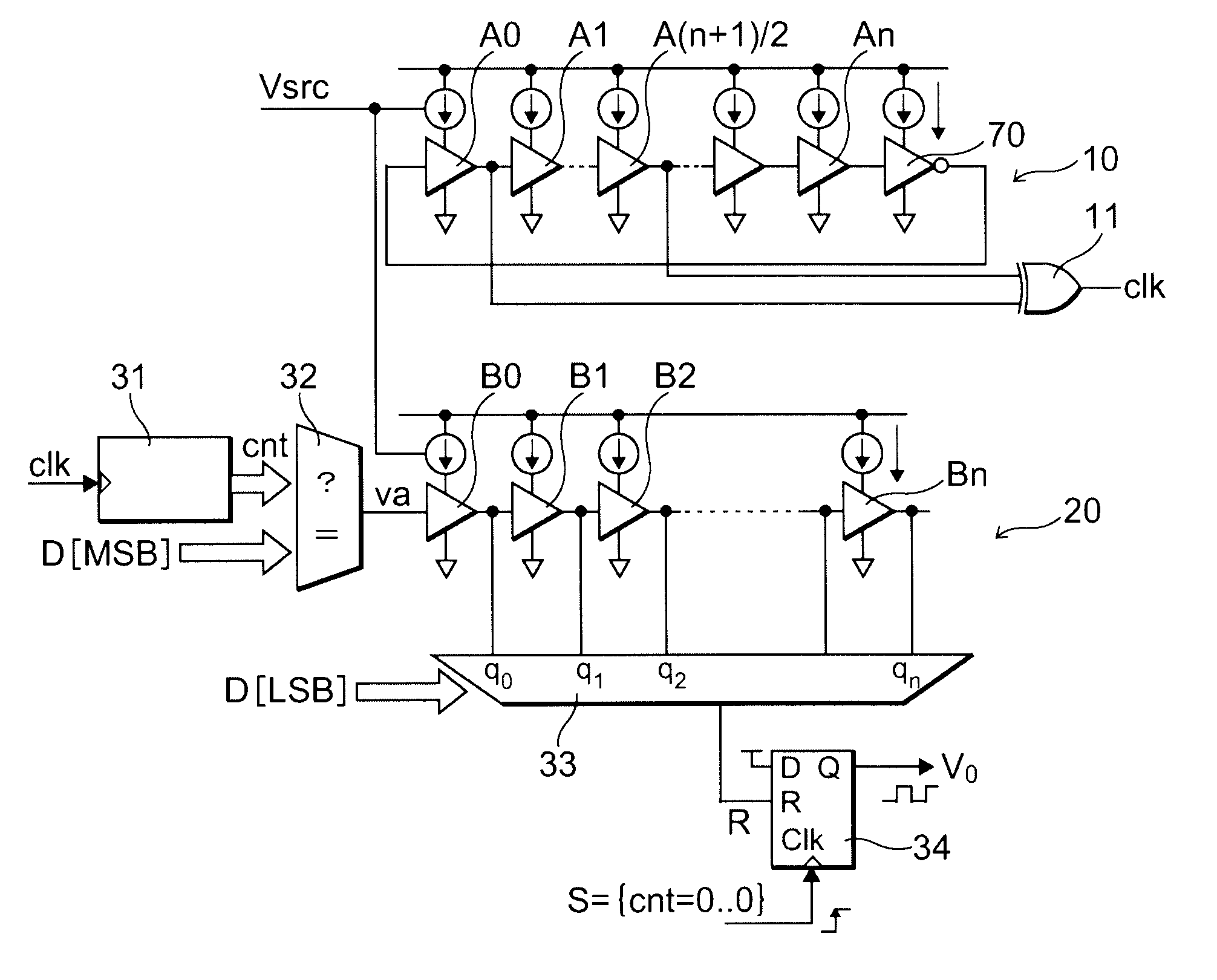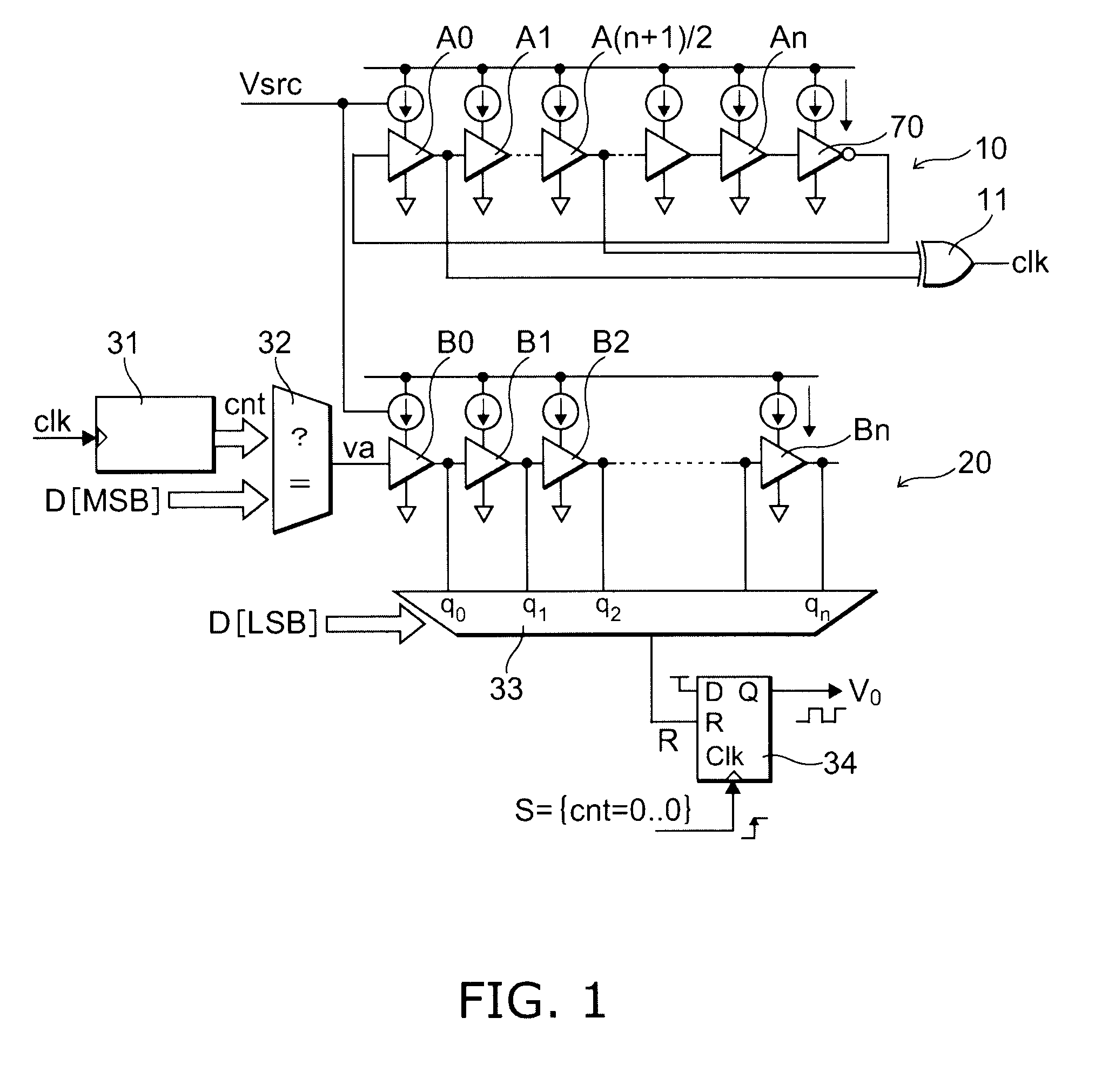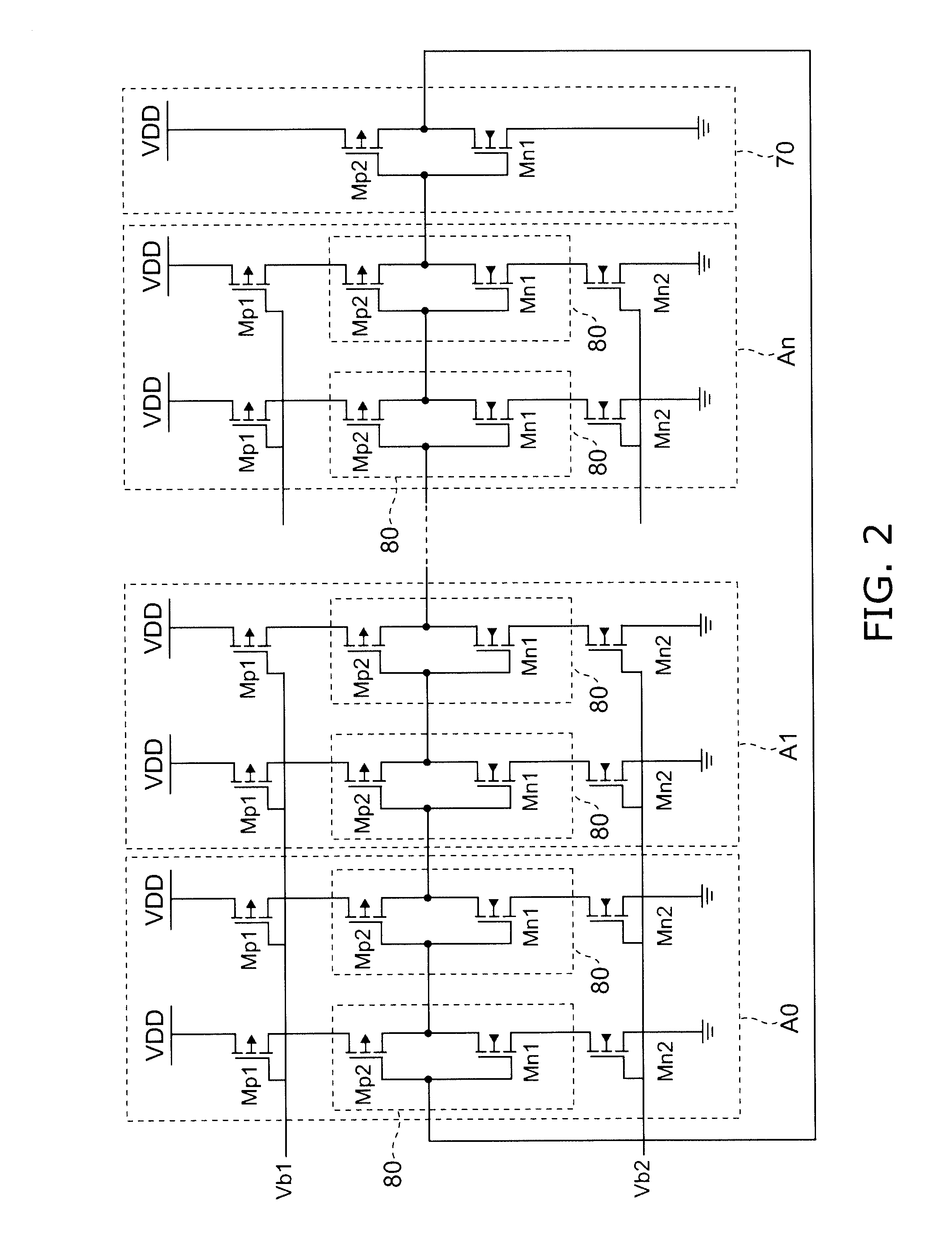Semiconductor device
a technology of semiconductors and devices, applied in the direction of generating/distributing signals, pulse techniques, instruments, etc., can solve the problems of increasing the current of consumption for operation by the clock, the failure of the power system in itself, and the large number of terminals, etc., and achieve the effect of shortening the time resolution
- Summary
- Abstract
- Description
- Claims
- Application Information
AI Technical Summary
Benefits of technology
Problems solved by technology
Method used
Image
Examples
first embodiment
[0054]FIG. 1 is a schematic cross-sectional view showing a circuit structure formed in a semiconductor device according to a first embodiment of the invention.
[0055]The circuit shown in FIG. 1 is a digital PWM (Pulse Width Modulation) circuit and has a voltage-control-type clock generation circuit 10, a delay circuit 20, a delay element input circuit 32, a counter 31, a multiplexer 33, a flipflop 34, and so forth. These are formed on a common semiconductor substrate and composed as one semiconductor device (chip or packaged shape).
[0056]The voltage-control-type clock generation circuit 10 has delay elements A0, A1, A(n+1) / 2, . . . An (the suffix n is odd number) serving as a plurality of stages of first delay elements. This circuit has a ring oscillator structure in which (n+1) delay elements A0, A1, A(n+1) / 2, . . . An are cascade-arranged and the output of the last-stage delay element An is input to an inverter circuit 70 and the output of the inverter circuit 70 is input to the fi...
second embodiment
[0078]FIG. 5 is a schematic view showing a circuit structure formed in a semiconductor device according to a second embodiment of the invention. The same signs are appended to the same components as the above-described first embodiment, and the detailed explanation thereof will be omitted.
[0079]In the second embodiment, the structure of the clock generation circuit is different from that of the first embodiment. The clock generation circuit 15 in the second embodiment is formed by the delay elements A0, A1, . . . A(n+1) / 2 that are half of those of the clock generation circuit 10 and the inverter circuit 70, and the clock signal clk is output from the output terminal of the inverter circuit 70. Moreover, the EXOR circuit 11 is used in generating the clock signal clk in the first embodiment, but is not required in the second embodiment. Thereby, in this embodiment, the number of the delay elements of the clock generation circuit 15 decreases, and thereby, the occupied area in the semi...
third embodiment
[0080]FIG. 6 is a schematic view showing a circuit structure formed on a semiconductor device according to a third embodiment of the invention. The same signs are appended to the same components as the above-described first embodiment, and the detailed explanation will be omitted.
[0081]Each of the clock generation circuit 10 and the delay circuit 25 have the delay elements formed on the same semiconductor substrate by the same process, and the same control voltage Vsrc is applied thereto, and therefore, in principle, by the rising edges of the outputs q0, q1, q2, . . . in the delay circuit 25, one period of the clock clk is almost accurately evenly divided (delay amount per stage becomes 1 / (number of the stages) of the clock period), but if the pair properties of the delay elements in both of the circuits 10, 25 are broken, the rising edges of the outputs q0, q1, q2, . . . come not to accurately evenly divide the clock period, and disagreement of the delay amount such as progress or...
PUM
 Login to View More
Login to View More Abstract
Description
Claims
Application Information
 Login to View More
Login to View More - R&D
- Intellectual Property
- Life Sciences
- Materials
- Tech Scout
- Unparalleled Data Quality
- Higher Quality Content
- 60% Fewer Hallucinations
Browse by: Latest US Patents, China's latest patents, Technical Efficacy Thesaurus, Application Domain, Technology Topic, Popular Technical Reports.
© 2025 PatSnap. All rights reserved.Legal|Privacy policy|Modern Slavery Act Transparency Statement|Sitemap|About US| Contact US: help@patsnap.com



